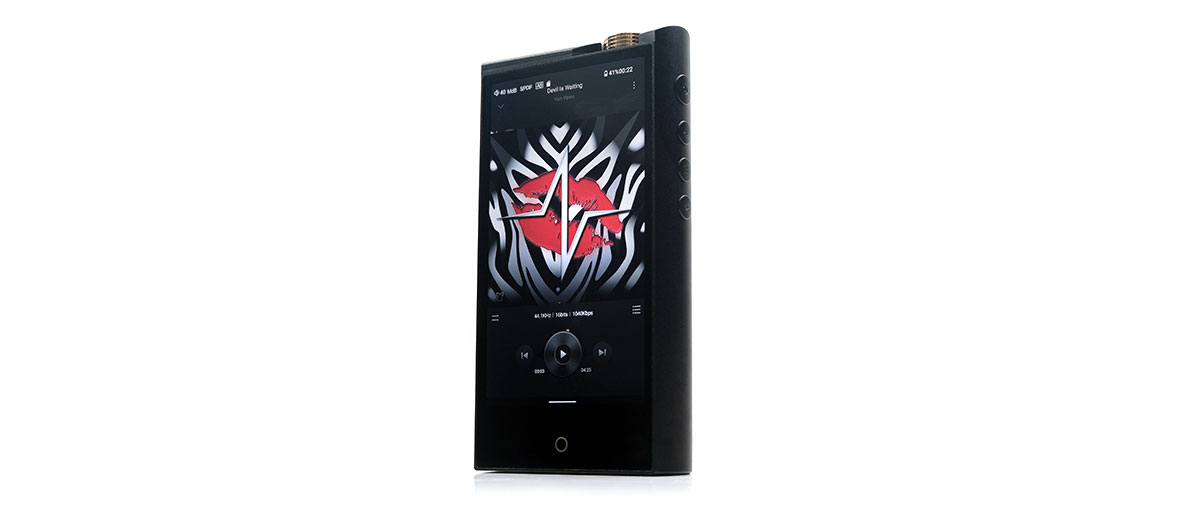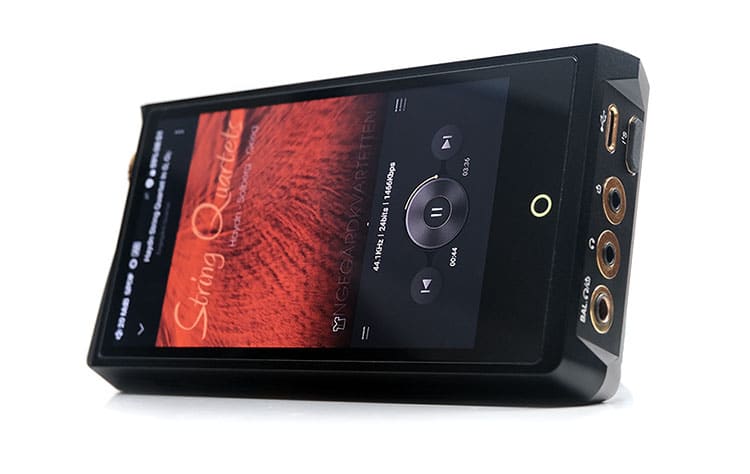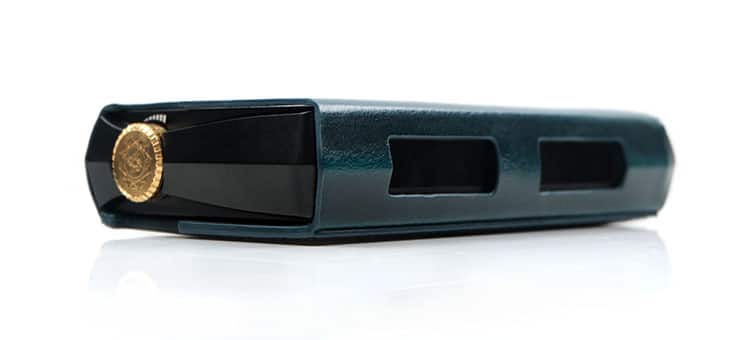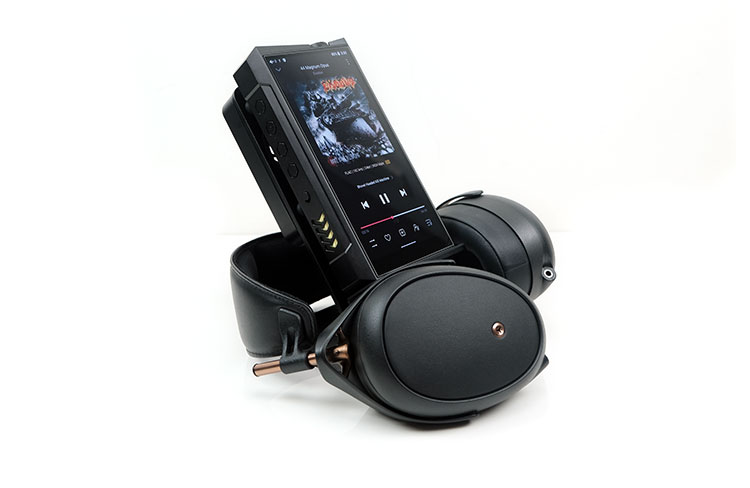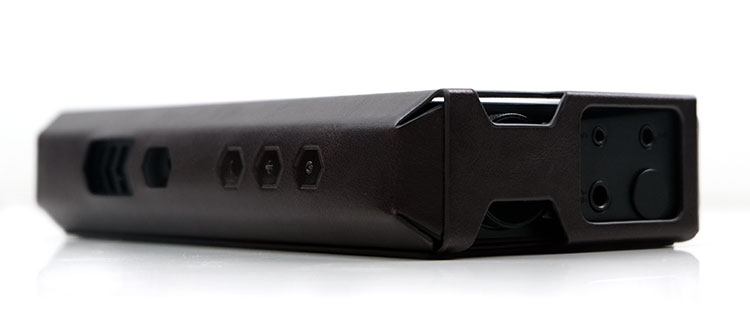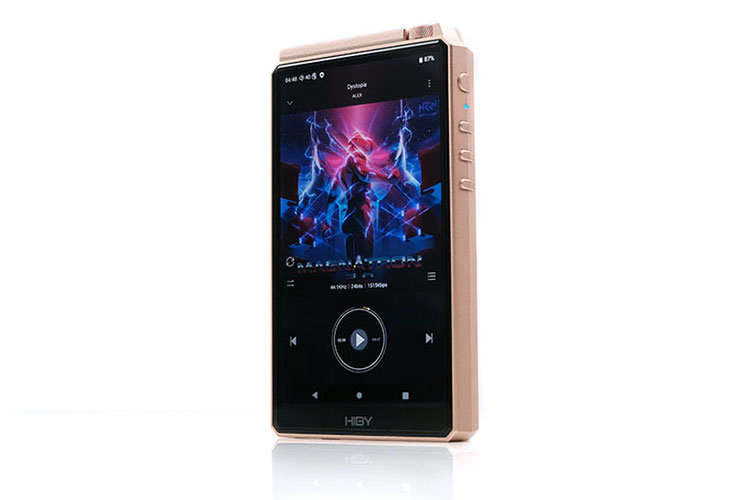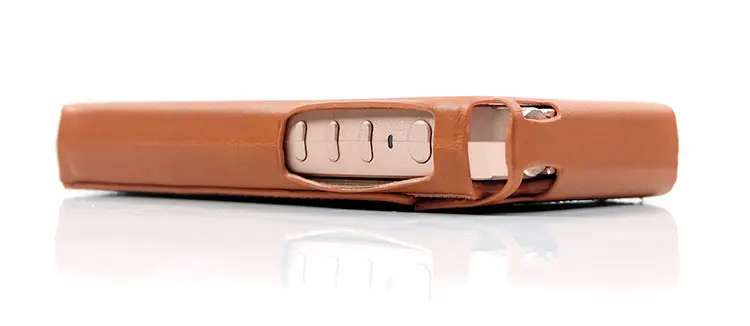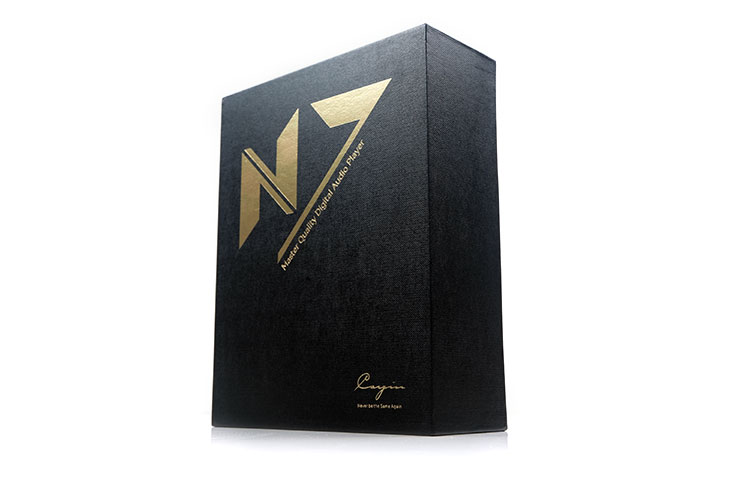Select Comparisons
The following comparisons were compiled using the Noble Audio Viking Ragnar, the Unique Melody Multiverse Mentor, and the Vision Ears Phonix in-ear monitors.
Cayin N8ii
$3499
The second generation Cayin N8ii was launched just last year and is the company’s current flagship digital audio player. You can click here to read our full review of the N8ii.
Technical
The N8ii is quite a different beast technically from the N7. For a start, it is a dual delta-sigma chipset as opposed to a 1-BIT DAC, although it’s one of the more unusual choices, a dual ROHM BD34301EKV implementation in mono mode.
That will mean DSD and PCM will be processed in a more typical manner for the N8ii as opposed to the N7’s uniquely different audio-bridge/1-BIT routes for each format.
Decoding, however, is matched with both offering PCM 32BIT/768kHz and up to DSD512 native decoding via USB and up to 16X MQA unfolding, (705/768kHz sampling rates). They also both have wireless connectivity with Bluetooth rates of up to LDAC 24BIT/96kHz or 192kHz for UAT-compatible devices.
The amplification side has some overlap with both offering dual operational modes of Class A and Class AB as well as being discrete engineered. However, the N8ii goes one step further with its dual Korg NuTube implementation enabling both a solid-state and tube mode from with its Android OS.
The N7 is also lacking the N8ii’s P+ mode, though if both are in Class A this will not be a feature on the N8ii. Power numbers without P+ favor the N7 slightly at 250mW compared to 240mW on a 32Ω @1kHz SE and 500mW compared to 480mW balanced.
Once P+’s stronger voltage swing is activated on the N8ii, however, you get a boost to 480mW SE and 750mW balanced giving it an edge over the N7 for more demanding headgear.
Finally, the N7 offered a dedicated line out and pre-out SE and balanced whereas the N8ii only offered a dedicated line out meaning the N7 is the more appropriate choice for linking up to power amps and active speakers.
Features
Probably one of the more important differences inside is the N7’s upgrade to Android 12 with a Snapdragon 665 CPU whereas the N8ii lags behind with an older Android 9 OS and a Snapdragon 660 version though it does have 6GB of RAM as opposed to 4GB.
Performance-wise both are fairly snappy though you will find the more up-to-date theming of the N7’s Android 12 a bit more tastefully done compared to the N8ii’s layout.
Both offer drop-down navigation shortcuts and Cayin’s gesture-driven UI though in Android 12 you can switch that to icon-based navigation at the cost of screen real estate being sacrificed.
Pros and cons with both of their screens. The N8ii 5″ OLED is brighter and with better saturation also and black backgrounds. The N7’s 5″ 1080p TFT has a better resolution and ppi count but looks comparatively muted for colors.
You will get more onboard memory with the N8ii at 128GB compared to 64GB though both offer a single microSD slot up to 1TB officially and flash OTG capability for additional expansion.
Dual 2.4/5GHz WiFi is available on both devices and since they are both Android you should have no issues streaming from 3rd party apps such as TIDAL or LAN networks.
Design
With the physical sizes of the dual Nutubes placing something of a constraint on Cayin, it’s no surprise the N8ii is the slightly larger and heavier of the two DAPs, at least height-wise. Otherwise, the dimensions are not that far apart.
As is also some of the shared design language with the sleek black external aluminum chassis and gold hot stamp potentiometer on the top panel.
Where they differ is largely down to the complexity of the finishing with the N8ii offering more shielding for its I/O on the base and top of the device and better ‘crevices’ for protecting the physical control from being accidentally pressed.
The N7 feels simpler in terms of engineering, however, its curved panels on either side make it slightly more comfortable in the hand. Its edging on the top and bottom also feels a shade smoother to the touch which I was not expecting.
Class A Performance
Of course, you get two timbre choices with the N8ii in either Class mode but let’s start with the Class A solid-state comparison as the closest matchup to the N7 version using the UM Multiverse Mentor as the main pairing.
With Class A on the N8ii, you cannot activate the additional P+ mode so its additional Vrms swing advantage over the N7 is lost. Once you level the playing field the N7 comes really close to the N8ii performance though there are some differences.
Probably the one difference that stood out the most was the vocal presence and tonal coloration which was great on the N8ii and less vibrant on the N7. The N8ii does not stretch out quite as wide as the N7 so staging wise it can sound a little more central but what it does is give the vocal presence more of a lift with stronger tonal saturation at the same time.
The N7 treble is just a shade softer and with less sparkle with mids and vocals sitting more neutral in the mix. It feels like it’s playing within itself a bit more with a neutral vocal image.
The tone is slightly drier but the imaging is really good, and at times you do feel there is more space in the N7 mids presentation compared to the N8ii. However, it’s that vibrancy and slight lift that gives the N8ii perhaps a more immediate sensation around the upper mids and lower treble.
Class AB Performance
Quite a lot of the differences in Class A for these two are carried over to Class AB without the P+ mode turned on. The key change though this time is in the treble performance.
This time I switched to the smoother-sounding Vision Ears Phonix using the balanced output of both DAPs but it was quite easy to pick up the additional sparkle and presence of the N8ii treble tuning whereas the N7 keeps a lid on it a bit more giving the quality a slightly softer more natural tone.
Class AB with P+ mode turned on is where you are spending your additional dollars on the N8ii, not to mention the juicier tube timbre mode that you can switch to while training that additional Vrms.
The dynamics of the N8ii get a strong lift with all of the tested monitors and though the N7 still retains that excellent holographic wide imaging experience its dynamics, particularly vocal presence, percussion sparkle, and bass slam, sound a little more conservative in their delivery.
The N8ii sounds more exuberant with the P+ mode turned on and arguably the more musical of the two before we move to the tube timbre mode which further sweetens the tone.
FiiO M17
$1799
The FiiO M17 was launched in early-2022 and is also the company’s flagship digital audio player. It represents a huge leap forward in capability over the older M15. You can read our full review of the M17 here.
Technical
Unlike the N7, the M17 is all-in for delta-sigma decoding with a flagship dual ES9038PRO implementation and an FPGA-controlled ‘digital bridge’. Both PCM and DSD go through the same upsampling SRC process before being decoded by the DAC.
Though the N7 also has FPGA to enhance the digital stream and output for fully balanced decoding its 1-BIT DAC is discrete-engineered as opposed to chip-set based and DSD will not be upsampled in the same manner.
Both can decode up to 32BIT/768kHz and DSD512, the M17’s top-tier rate is only possible via its USB-DAC functionality whereas the N7 will natively decode up to the same rates through local playback giving it a bit of an advantage.
For MQA, the N7 can also unfold to a higher 16X as opposed to 8X so maximum sampling will be up to 768kHz as opposed to 384kHz. One small caveat is the ability of the M17 to offer aptX HD for BT which the N7 does not have. That being said most will go for the superior LDAC when possible.
Amplification offers entirely different mindsets with FiiO going for pure power and Cayin opting instead for discrete ‘delicacy’ in the N7 as well as dual Class A and AB operational modes. The M17’s THX circuit battery mode will give you up to 1.5W into 32Ω going balanced whereas the N7 will stop at just 500mW into the same load.
The M17 DC mode doubles the output power to 3W into 32Ω with gain modes of up to 16dB giving you desktop-grade amplification which its huge size seems entirely suited to.
Features
Both units offer dedicated line outs for both SE and balanced outputs with the FiiO set at 1.9Vrms SE and 3.9Vrms balanced and the N7 a shade higher at 2Vrms and 4Vrms.
The M17 does not have N7’s ability to switch to a Pre-out with enhanced voltage capability of 4Vrms and 7Vrms. One could argue it has no need since its DC power capability offers plenty of amplification for headphones but the ability to slip into a HiFi system with variable voltage pre-out gives the N7 a unique additional dimension.
The M17 goes the extra mile by offering a 6.35mm PO, dual USB 2.0 and 3.0, as well as a more traditional SPDIF connector on the rear for I/O. However, the N7 I²S port has its own advantages if you happen to use an I²S compatible decoder.
The N7’s Android 12 OS combined with a Snapdragon 665/4GB is well ahead of the M17’s older Android 10 and 660/4GB platform and should offer a more seamless experience for dark themes and drop-down navigation messaging.
Both DAPs offer 64GB onboard memory and both have single TF card slots with USB OTG flash card expansion capabilities. The M17’s USB host also gives it the ability to run an external HD drive separate from charging, which can give it an edge.
Battery life is not terribly different with both offering around 10 hours single-ended and 8 hours going balanced. However, note, going Class A on the N7 will drop it significantly to 8.5 hours SE and 6.5 hours balanced.
Design
Size matters here so calling the M17 a DAP is a bit of a stretch. Though the N7 is a big DAP in the traditional sense it is dwarfed by the dimensions of the M17 weighing significantly less at 380g compared to 610g.
The design language is also massively different with the mech-style aggressive lines of the M17 perhaps speaking to a younger audience compared to the minimalist styling of the black aluminum shell of the N7. The M17 looks the busier of the two with lots of LED lights, edgy button shapes, and grills both left and right.
I do like the slightly more protective recessing of some of the M17 panels which the N7 does not really have. However, once you slot the stock leather case onto the M17 it becomes a bit harder to operate as there is a lot of distance between the case leather and the buttons.
The M17’s larger 1080 x 2160 FHD+ 18:9 in-cell display panel is impressive with more screen real estate and a higher level of resolution compared to the N7’s 5″ 1080p TFT panel. It’s a very easy screen to operate for big hands and one of the advantages of going so big in general on the design side.
Performance
I tried two IEMs with both, the Contour XO and the UM Multiverse Mentor, and in both cases, the side-by-side comparisons threw up some tonal and technical differences.
I felt the tonal difference a bit more with the Contour XO. It has a fairly prominent 6-7k peak with an excess of energy that requires a bit of a smoother tonal pairing. The M17 did ok but at times you could pick up its steelier mid-treble overtone creeping into the mids and vocals exhibiting some additional sharpness and sibilance on brighter recordings.
The N7 Class AB mode was clean, perhaps slightly lighter in weight compared to the smoother richer Class A with the Contour XO. However, both modes sounded more natural in the highs and upper mids to my ears compared to the M17.
The second tonal difference was the surprising one, the low-end. Now I have always considered the M17 to deliver sub-bass weight with gusto but here the N7, particularly the Class A mode, offers a bit more weight and improved texture.
It does profit from some additional space to operate in which was lacking in the M17 pairing but even then, the M17 bass felt politer whereas the N7 sub-bass sounded deeper and better defined.
The final observation was with the Multiverse Mentor and here it was on the technical. When passages in music got busy with complex imaging coming to the fore the M17 struggled to inject the same level of clarity and blackness into its background compared to the N7.
The one caveat is power. Once increase the load the M17 retains a strong dynamic allowing it to pair better with the likes of the 300Ω ZMF Headphones Atrium, something which the N7 struggled with, even with its balanced output.
HiBy RS6
$1399
The HiBy RS6 was launched in late 2021 and is positioned just below their flagship RS8. It also won our Editor’s Choice Top Gear Award for 2021. You can read our full review of the RS6 here.
Technical
Neither the RS6 nor the N7 uses any sort of classic delta-sigma chipset. The RS6 differs by using more of a classic R-2R resistor ladder network whereas the N7 uses a 1-BIT DAC though both are discrete topologies.
There is a different emphasis in the design approach regarding temperature and precision tolerance being much more exacting for R-2R compared to 1-BIT which switches its focus more on noise shaping and achieving a clean power supply.
Also, for the RS6, both DSD and PCM go through the same multi-bit, (24BIT) conversion and upsampling process before being decoded. Whereas only PCM goes through an SRC, and DSD stays in its true 1-BIT format before conversion inside the N7.
Decoding rates are more capped on the RS6 at a maximum of DSD256 natively compared to DSD512 on the N7 though PCM at 32BIT/768kHz is where I would expect a good R-2R DAC to be and also on par with the N7. Both can offer MQA 16X unfolding rates and both can offer 24BIT/96kHz LDAC and 192kHz UAT BT transmission and receiving.
The RS6 amplification scheme is controlled by opamps for both current and voltage output. The N7 is discrete all the way to its output using a mix of JFET for its differential stage and BJT for voltage amplification.
Neither of these DAPs will give you the strongest amplification for demanding headphones with the RS6 capable of 180mW@32Ω SE and 690mW@32Ω balanced compared to the N7 which is higher for SE at 250mW but lower for balanced at 500mW on the same weighted load.
Both DAPS offer dedicated line out at 2Vrms SE and 4Vrms SE respectively but only the N7 offers a variable voltage pre-out feature for power amps and active speakers.
Features
18 months is a long time in the DAP world so it’s no surprise that the RS6’s Android 9 and Snapdragon 660/4Gb setup is behind the N7’s fresher Android 12, Snapdragon 665 CPU, and 4GB of RAM.
The N7 simply looks more modern and will have the longer lifecycle of the two for security patches and app compatibility. Performance is comparatively snappy though despite the aged OS on the RS6.
I would also say the RS6 stock theme is topical as icons are hard to distinguish and newly downloaded apps clash by retaining their original design aesthetic. I prefer to switch it off and go with a vanilla Android look similar to the N7.
The RS6 does have one major feature and that is its Darwin architecture which manifests itself in aspects such as NOS/OS switching, IEM tuning profiles, and a lot more DSP functions in its core OS.
On the other hand, the N7 will give you that dual operational mode for amplification, and the difference between the two is very noticeable. You can also DSP with the N7 as it has the HiBy Music app out of the box similar to the RS6.
I/O is very similar aside from the N7’s additional I²S which I find very handy for linking with other Cayin components such as the iDAC6 MK2.
Design
The RS6 is the smaller of the two DAPs by far, even accounting for the fact both have similarly sized 5″ screens. I suspect the need to use a double PCB board and a lot more discrete components down the circuit chain for the N7 naturally leads to a larger chassis.
That means the RS6 is more ‘pocketable’ and easy to use single-handed compared to the N7. The RS6’s copper housing is beautifully designed but it does mean it’s a surprisingly weighty device for the size at 335g compared to 380g for the N7.
I do believe some had some chipping issues with the copper champagne gold finish of the original sample so there is an additional grey-finished RS6 that came out a while back though I believe it is still a copper material underneath.
Both DAPs offer the same screen real estate at 5″ 1080p for their respective panels. The RS6 screen might seem smaller but only because it has a lot less bezel compared to the N7 version.
It also uses the classic icon screen control at the base of the screen as opposed to Cayin’s gesture system though in Android 12 you can change it to a similar icon system.
Performance
The RS6 differences center primarily around the amount of warmth in the general timbral balance of our paired IEMs combined with its dynamic range and staging capability.
Using the Viking Ragnar as our benchmark the RS6 sounds a little softer overall, even compared to the N7 in Class A mode. Certainly, more even-harmonic biased than the N7 Class AB output and with more mid-to-upper bass bloom in the Ragnar sound signature compared to either of the dual operational modes from the N7.
Normally, I am not against warmth with the Ragnar as it can be a challenging pairing and I tend to avoid overly sterile or bright sources. However, the N7 doesn’t mess too much with the Ragnar treble and arguably provides the more realistic timbre also on the mids and lows with a better harmonic balance.
You could argue that the N7/Ragnar paring tone is a shade drier compared to the RS6 in Class A but I would take that over the RS6’s/Ragnar pairing’s hazier leading edges and longer levels of decay. Especially so with the narrower staging quality which places more emphasis on bass bloom and vocal presence at the cost of space and air.
The N7 goes in the opposite direction injecting a lot more space into the presentation sounding more holographic in both Class modes. Vocals and mid-bass are more neutrally colored and positioned with Class AB but both modes offer better separation provoking a stronger sub-bass dynamic from Ragnar’s dynamic driver.
The N7 has more flexibility with a more realistic timbral balance and much better imaging clarity in either operational mode. The RS6 is more for those who want a specific coloration, that smooth R-2R vocal texture, and enhanced mid-bass bloom in their IEM matchup.
Our Verdict
The Cayin N7 is the kind of DAP that invigorates your listening experience with headgear that perhaps over time you have gotten a bit blasé about.
It may not be the final word in exacting detail like its flagship sibling, the N8ii but I personally find its ability to image and scale a soundstage on a regular IEM to be incredibly refreshing.
So much so, it might actually be my go-to DAP just for the sheer fun and excitement of what it going to do to the next IEM I attach it to. Not to mention that tonally it came across as very balanced and likable in every pairing performance.
Those are not just fluffy words of encouragement, that was my own personal experience using it as my main source during CanJam Singapore 2023 where just about every IEM out there was available to try.
And try I did; in the trade show, at the airport, on the plane, and even when I had some downtime in between other reviews I had the N7 switched on. It can be one hell of an addictive DAP.
Cayin N7 Technical Specifications
- Fully Balanced Discrete 1-Bit Resistor Network DSD DAC.
- Discrete Dual BJT Low Pass Filter.
- Discrete JFET + BJT Headphone Amplifier.
- Dual Operation Mode: Class A and Class AB.
- Headphone Outputs: 3.5mm Single Ended and 4.4mm Balanced.
- Shared Line and Pre Output: 3.5mm Single Ended and 4.4mm Balanced.
- Digital Interface: USB In, USB Out, Coaxial Output, I2S Output.
- Android 12 Streaming Ready.
- Snapdragon 665, 4G RAM, 64G Internal Memory, TF Card Slot*1.
- Dual Band Wifi: 2.4G/5G.
- 9000mAh Battery with a duration of 6 to 10 hours.
- Five Inches TFT multi-point touch screen.

